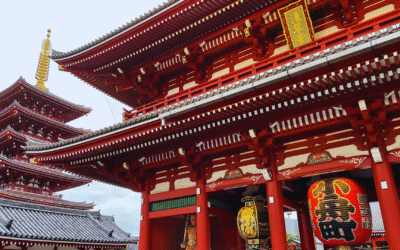Booked your flight to Japan? Yaaas, exciting stuff. Before you dive headfirst into sushi cravings and geeking out over anime spots, let’s talk through a few things that could mess with your trip once you’re actually there.
Japan is amazing—but it’s also full of little differences that can catch you off guard if you’re not ready. From transport hiccups and tech issues to restaurant rules and social etiquette, there’s a lot that’s easy to get wrong. Most of it’s simple stuff, but if you don’t know about it, it can turn into a bit of a headache.
This post covers the most common travel mistakes people make while they’re in Japan—things that are easy to avoid once you know about them. A bit of prep now means less confusion later, and more time to enjoy the good bits.
Let’s get into it.
🚫 Planning & Booking Blunders
1. Trying to do too many cities in too little time

Trying to hit Tokyo, Kyoto, Osaka, Hiroshima and Hokkaido in 10 days might sound like a dream trip, but it’s just too much. You’ll spend half your holiday on trains, dragging luggage, and figuring out directions instead of actually enjoying the places you came to see.
Japan is full of detail and charm, and you’ll miss a lot of that if you’re always rushing from one spot to the next. Instead, pick two or three main locations and give yourself time to breathe. Take a slow morning in a local cafe, go off the beaten path, or just chill at an onsen without checking your watch. You’ll get more out of your trip by going deeper, not wider.
2. Forgetting to factor in transfer times between sights

Shinkansen (bullet trains) are iconic—and fast—but getting from point A to B is rarely just a straight shot. You’ll often need to take local trains to reach the station, navigate big stations with multiple platforms, wait for connections, and possibly walk long distances between transfers.
All of that eats into your day. A train ride that looks like two hours can actually take three or four when you count everything in—like waiting for the next train if you missed the previous one, moving from one platform to another, or getting lost in major stations like Shinjuku (and yes, you will get lost).
When planning your schedule, add some buffer time so you’re not rushing or missing things. A chill pace makes everything feel way more enjoyable.
3. Assuming the JR Pass is always a good deal
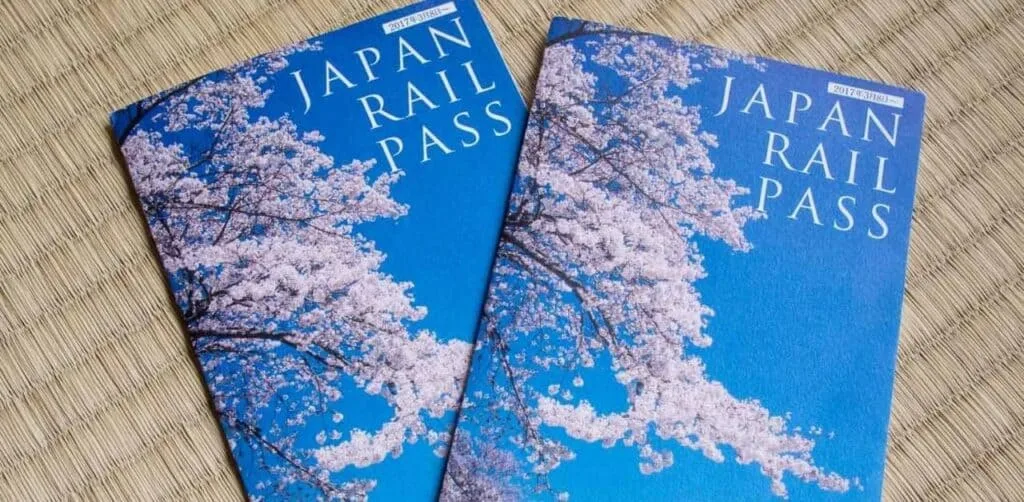
The JR Pass gets loads of hype—and fair enough, it can be a money-saver. But it’s not always worth it. If your plan includes lots of long-distance travel across the country, then yes, it might make sense. But if you’re staying in one region or mostly taking local trains, it could be way more expensive than just buying individual tickets.
Before you buy it, sit down with your itinerary and check your main train journeys using a fare calculator. It might feel like an annoying extra step, but it can seriously save you cash. A little effort here means more money for snacks, souvenirs, and random capsule toys later. Check out our handy guide on determining whether the JR Pass is right for you.
4. Booking hotels without checking the nearest station exit

When a hotel says it’s “close to the station,” that sounds perfect—until you find out the station has 20 exits and you picked one on the opposite side. Japan’s train stations can be huge and confusing, and walking around with heavy luggage looking for your hotel is not how you want to start your day.
Before you hit “book now,” open up Google Maps, find the exact station exit your hotel is near, and check walking directions from that exit. It sounds small, but it can save you from a 20-minute detour in the rain or late-night confusion after a long day out.
5. Not reserving activities or restaurants in advance

In Japan, the coolest spots book out early. Museums, art shows, teamLab, the Ghibli Museum, and even certain cafes or restaurants often require reservations in advance. Showing up on the day and hoping for the best usually doesn’t work out.
To avoid missing out, plan ahead. If you’re not sure what needs booking or how to do it, check out our Japan travel reservations guide. It breaks everything down and helps you lock in the fun stuff stress-free, so you’re not scrambling last-minute.
If you’re not sure where to start, we’ve put together a curated list of authentic cultural experiences from all over Japan—tea ceremonies, cooking classes, traditional crafts, you name it. You can check them out and book directly here.
6. Fixating on viral restaurants

It’s easy to get caught up in TikTok spots and Instagram-famous food places, but the truth is, many of them are packed with tourists, overrated, or impossible to get into without a reservation. Meanwhile, Japan is absolutely full of incredible local spots that never go viral—but totally deserve to.
Skip the queues and go where the locals eat. Use Tabelog, ask your accommodation for recommendations, or just follow your nose down a side street. You’ll often find better food with no wait, better prices, and a much more relaxed experience.
💻 Tech & App Fails
7. Landing in Japan without essential apps downloaded
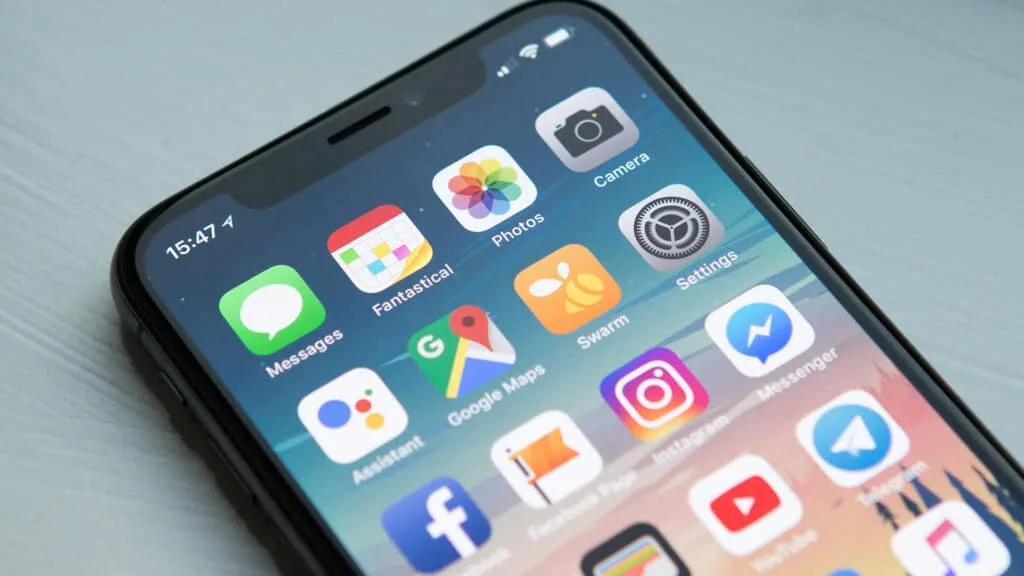
If you land in Japan without the right apps, you’re not doomed—but you’re definitely making things harder for yourself. A little digital prep before your trip can save you from so many headaches, especially when you’re trying to navigate train transfers, read signs, or find food that isn’t a random tourist trap.
Here are the must-haves—make sure to download these before you fly, and set them up with offline features where possible:
- Google Maps – Use it for walking and train navigation. But don’t forget to download offline maps for the cities you’re visiting. If your signal drops, you’ll still be able to find your way.
- Google Translate – Use the camera tool to translate signs and menus, or type English and get spoken Japanese back. Crucially, download the Japanese language pack offline before your trip—this helps massively when you’re out of data or underground.
- Japan Travel by NAVITIME or Japan Transit Planner – Both are way more accurate than Google for Japanese train journeys. Filter by JR Pass, get platform info, and see all your connections clearly.
- Tabelog – The local go-to for restaurant reviews. It’s stricter than Google Reviews and filters can help you avoid tourist traps. Use the browser version for English support.
- LINE – Japan’s most-used messaging app. Handy for communicating with hosts, tours, or even locals you meet.
- Mobile Suica or Pasmo – If you’re on iPhone and your region supports it, load up a digital IC card in Apple Wallet and skip the physical one altogether.
Sort all this while you’ve got solid Wi-Fi at home. Sign in, give permissions, and download offline maps and language packs before you land. You’ll be way more prepared, even if your SIM doesn’t activate or airport Wi-Fi flops.
8. Not setting up Mobile Suica or Pasmo

Getting around in Japan is super easy with an IC card like Suica or Pasmo. These handy little cards let you tap in and out of trains, buses, and even pay at convenience stores, vending machines, and some restaurants. It makes daily travel way smoother and saves you from constantly buying individual tickets.
You can pick up a physical card at most train stations when you arrive, which works for everyone no matter what phone you’ve got. It’s quick to use, easy to top up with cash, and super convenient.
If you’ve got an iPhone, you can also add a Suica or Pasmo to your Apple Wallet and top it up digitally. It means one less thing to carry (or lose!), and you can avoid the queues at ticket machines. Just make sure your phone and region support it before your trip so you can set it up in advance.
Whichever version you go for, having one of these cards will make your time in Japan way easier.
9. Trusting Google Maps or Tabelog too much

Google Maps is great for directions—but when it comes to food reviews in Japan? Be careful. Ratings can be inflated by freebies or tourist hype, and you might end up in a place that looks great online but feels super average in real life.
Also, take the listed opening hours with a pinch of salt—especially in smaller towns or countryside spots. In Tokyo, they’re usually pretty accurate, but outside the big cities, a lot of places don’t bother updating their info. So something marked as “open” might actually be totally shut when you rock up. If you’re heading somewhere specific, it’s worth giving them a quick call to make sure they’re actually open.
Tabelog is generally more reliable, but it’s not perfect either. It’s in Japanese by default, and the higher-rated spots often get fully booked or might not suit your vibe. Plus, it’s still just reviews—from strangers.
If you really want to find places locals actually love, why not leave it to someone who lives and breathes the food scene? We run several food and drink tours across Tokyo that take you to places you’d never stumble on alone—from hidden neighbourhood izakayas to street eats that cater to vegetarians and gluten-free travellers.
These aren’t touristy chains—they’re our real favourite spots, curated by locals who know their stuff. You can check them out here:
- 🍶Food & Drinks Bar Tour – Discover Unique Tokyo Nightlife
- 🥬Taste Tokyo: A Vegetarian & Vegan Friendly Food Tour
- 🍻Discover Tokyo’s Hidden Food & Drink Neighbourhoods
If you want to eat like a local and skip the guessing game, these tours are a solid place to start.
10. Using a weak SIM or Wi-Fi plan

Having reliable internet in Japan isn’t just nice to have—it’s essential. You’ll be using your phone for train schedules, translations, directions, and even ordering food. But not all SIM cards and pocket Wi-Fi options are equal. Some cheap ones have limited data or spotty coverage, especially in more rural areas or underground.
Before you buy, make sure you’re getting something that runs on one of Japan’s major networks (like SoftBank or NTT Docomo). And if you’re not sure whether to go for a SIM or pocket Wi-Fi, we’ve got a full breakdown to help you decide what’s best for your trip: Japan Internet Access – SIM Card or Pocket WiFi?
It’s worth figuring this out before you land, so you’re not scrambling for airport Wi-Fi or stuck with a plan that doesn’t actually work where you need it.
11. Not having a physical backup of your hotel address in Japanese
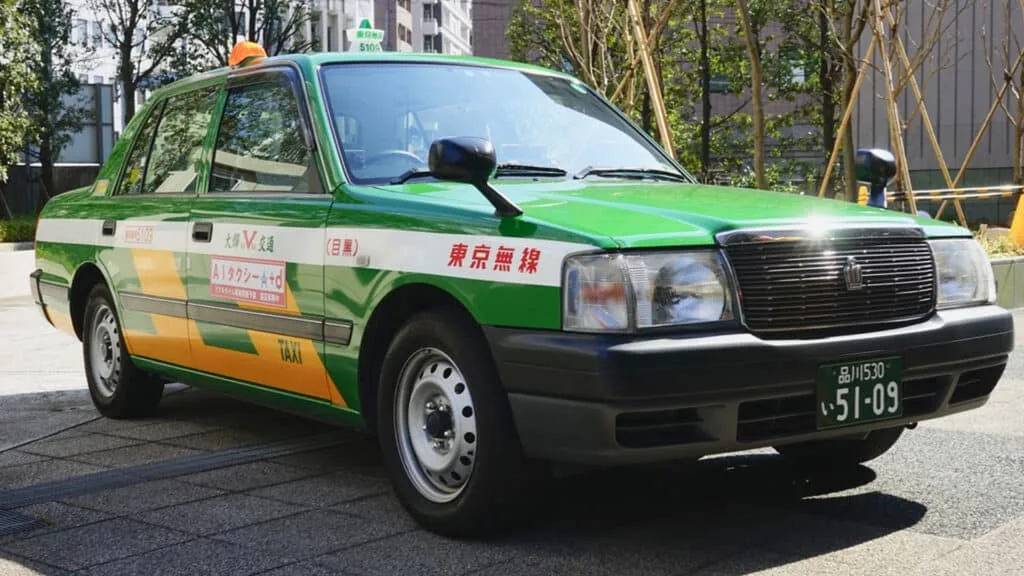
Your phone is your best friend while travelling—until it runs out of battery, loses signal, or just stops working for no reason. If you’re trying to get to your hotel and need to ask someone for help (or show a taxi driver where to go), a screenshot of the address in Japanese can save you a lot of hassle.
Bonus points if it also has a phone number and nearby landmarks. It takes two seconds to sort out and can seriously come in clutch when you’re tired, lost, or just can’t deal with figuring things out on the fly.
🍜 Food & Dining Fails
12. Missing your ryokan dinner time

If you’re staying at a ryokan or minshuku, dinner is usually a big deal. These traditional meals are planned in advance and made fresh—just for you. But they’re served at a specific time, and if you show up late, there’s a good chance the food won’t be waiting. Ryokan kitchens don’t run like restaurants, and you can’t just ask them to hold your meal or heat it up later.
Staying at a ryokan also comes with a few other customs—like taking off your shoes at the entrance and wearing the provided yukata. Shared baths are usually open during set hours (not 24/7), so it’s good to check the schedule when you arrive. It’s all part of the charm, but being mindful of timing really does make the experience smoother.
If you think you’ll arrive late, let them know as early as possible. Or, if your plans are up in the air, it might be better to book your stay without dinner included and eat out instead.
13. Expecting to customise meals

Japan doesn’t really do “Can I get this without that?” Unless you’re somewhere that clearly offers substitutions, set meals are usually just that—set.
This isn’t bad service, it’s just not part of the culture. Chefs take pride in what they serve, and tweaking it on the fly isn’t usually something they’ll do. If you have dietary restrictions, it’s best to research places that cater to them ahead of time or ask someone to help you call and check before you go.
14. Trying to get breakfast at 8am (when it’s not a thing)
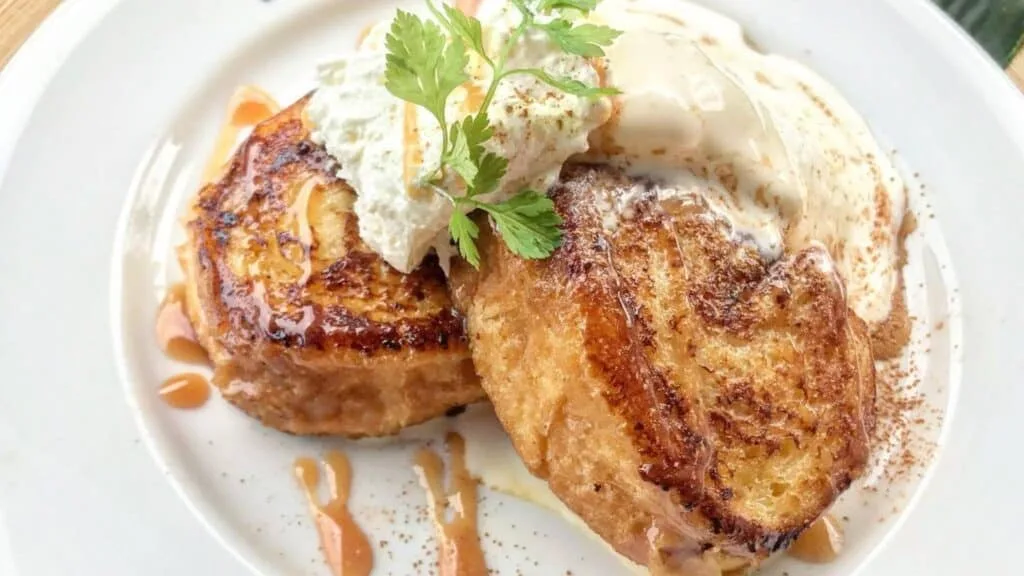
Planning to start your day with a nice early breakfast at a local cafe? You might be out of luck. A lot of restaurants and cafes in Japan don’t open until 10 or 11am, even in the big cities.
Convenience stores (a.k.a. konbini) will save the day here—with solid coffee, onigiri, sandwiches, and even hot food. ig chain cafes like DOUTOR or Tully’s can also be a good fallback for an early sit-down option. But if you’re set on pancakes or a cute local spot, definitely check opening hours in advance.
Also, don’t overlook 喫茶店 (kissaten). These traditional Japanese-style cafes have a super nostalgic, local vibe that’s totally different from modern coffee chains. They’re a great way to experience a more authentic side of Japan, especially if you’re into Showa-era aesthetics and a slower, quieter atmosphere. You can often go to a kissaten for breakfast too. Start your day in a cosy setting with old-school charm.
15. Not checking for allergy-friendly spots ahead of time

Food allergies—and dietary preferences—can be tricky to manage in Japan, especially when language barriers come into play. Ingredient lists often aren’t clear, and not all restaurants are familiar with how serious certain allergies can be—or that some people avoid certain foods for cultural or personal reasons, not just medical ones.
If you have an allergy or specific dietary preferences, it’s worth preparing a translation card that explains it in Japanese. You can also ask your accommodation to help call restaurants in advance. Don’t just rely on being able to explain it in the moment—it’s better to be safe than stuck with a plate of mystery sauce and no idea what’s in it.
If you’re vegetarian, vegan, or have other dietary preferences, check out this post for tips on navigating the food scene in Japan. And if you’d rather not stress about it at all, our vegan food tour takes care of everything—so you can just show up and enjoy the eats.
16. Not knowing how to use ramen ticket machines
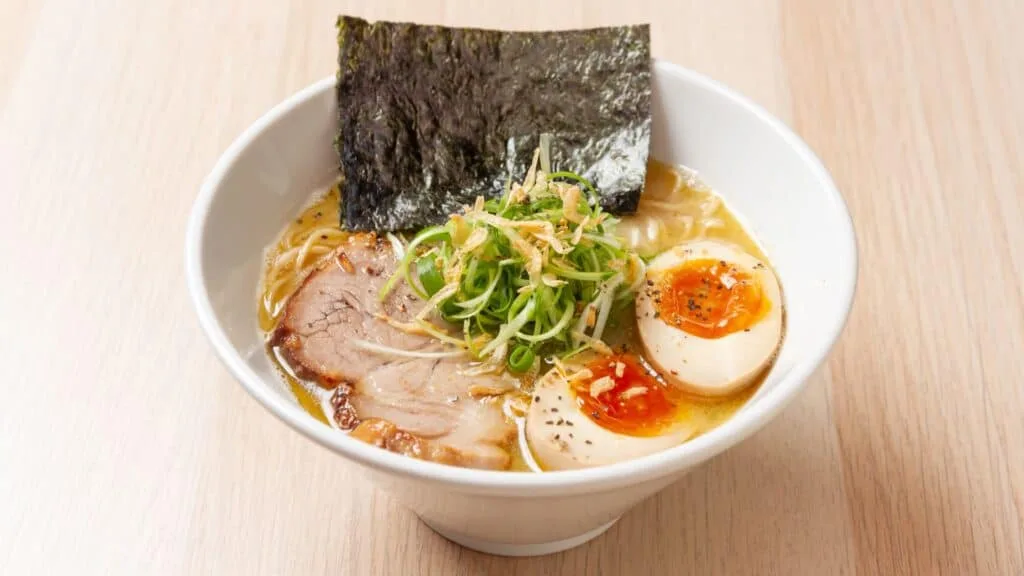
You walk into a ramen shop, and instead of someone greeting you with a menu, you’re met with a vending machine full of buttons and Japanese text. Welcome to the ramen ticket machine.
These machines are actually super efficient once you get the hang of them. You choose your meal, insert your cash (often only coins or bills—no cards), then hand your ticket to the staff. If you’re stuck, don’t stress—just point at a picture on the menu or ask for help. Most staff are used to it and happy to assist.
17. Not queuing properly at popular food spots

Lining up is serious business in Japan. If a restaurant’s popular, you’ll probably need to queue—and there’s usually a system. It might be a sign-up sheet, a numbered ticket, or just a classic line down the street.
Don’t hover by the door, try to squeeze in, or “wait inside”—even if there are seats. Follow the lead of the people already waiting. If in doubt, just ask a staff member where to line up, and they’ll point you in the right direction.
18. Skipping department store food basements (depachika)

Depachika (department store food basements) are a whole experience in themselves—packed with everything from high-end sushi and bento boxes to fried snacks, sweets, and seasonal treats.
They’re perfect for lunch on the go, dinner in your hotel, or just grabbing something quick before your train. And if you go in the evening, you’ll often catch discounts as they try to sell everything off before closing. Don’t miss out—some of the best meals in Japan aren’t in restaurants.
19. Not knowing basic restaurant etiquette (wet towels, otoshi, etc.)

There’s a bunch of small things about eating out in Japan that no one really tells you, but they all add up to make you either blend in… or stick out. Nothing too intense—just simple stuff that’s good to know so you don’t accidentally offend someone or confuse yourself.
When you’re seated, you’ll usually be given a wet towel (called oshibori). This is for cleaning your hands—not your face or neck, no matter how refreshing it feels. Just give your hands a quick wipe and fold it neatly when you’re done.
In izakayas and casual restaurants, you might also get a small dish you didn’t order—this is called otoshi (or tsukidashi in Kansai). It’s basically a mandatory starter, and yes, it comes with a small cover charge (usually ¥300–500). It’s not a scam—it’s just how things work. You don’t choose it, and you can’t opt out.
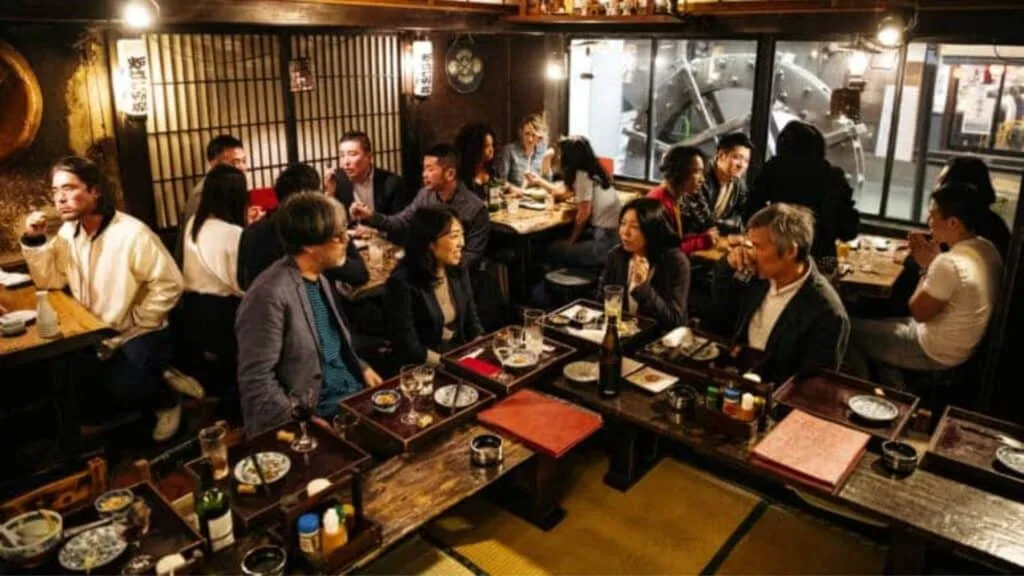
Tipping? Don’t. It’s not part of the culture and will usually just confuse the staff. If you try to leave money behind, someone will likely run after you to return it.
When you want to order, don’t wave someone down or shout. Some places have call buttons at the table—use that. If not, a polite “sumimasen” (excuse me) works.
When you’re done eating, take your bill up to the counter near the door to pay. Most places won’t bring a card machine to your table like in some other countries. Unless they specifically say “pay at the table,” it’s usually done at the counter. Also—if you’re sharing dishes (especially in izakayas), it’s polite to use the opposite ends of your chopsticks or serving utensils when picking from shared plates.
None of this stuff is super strict, and locals don’t expect you to be perfect. But knowing the basics makes the experience smoother, and you’ll probably enjoy it more when you feel like you’ve got the hang of things.
🚆 Transport Traps
20. Not planning your airport-to-hotel route

Nothing kills the vibe faster than stepping off a long-haul flight and realising you’ve got no clue how to get to your hotel. Japan’s public transport is fantastic, but it can be overwhelming when you’re tired, in a new country, and trying to read signs in a language you don’t understand.
Sort this out before you fly. Find out which train, bus, or shuttle gets you from the airport to your accommodation, and screenshot directions just in case you lose signal. Not sure where to start? We’ve got helpful guides on how to get from the major airports in Tokyo and Osaka to the city centre—definitely worth a look before you land.
21. Standing on the wrong side of escalators

This one’s simple but very real. In most of Japan, people stand on the left side of the escalator and let others pass on the right. But in Osaka and a few other regions near Osaka, it’s the opposite—stand on the right, walk on the left.
If you don’t follow the flow, you’ll mess up the rhythm and might even get some passive-aggressive sighs or stares. Just watch what the locals are doing and copy them. It’s one of those tiny things that makes you look like you know what you’re doing.
22. Taking the right train in the wrong direction
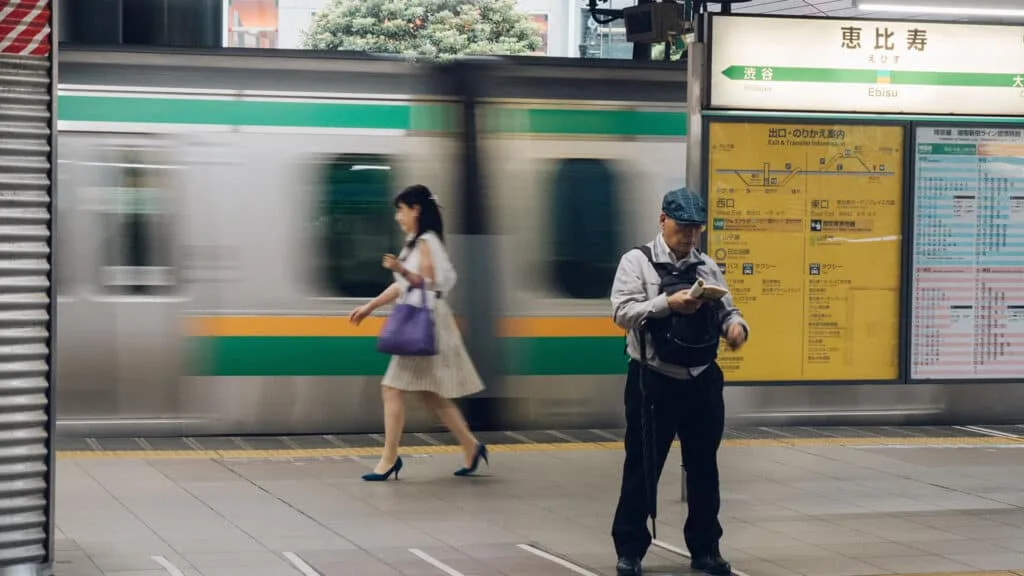
Train platforms can be confusing, especially in bigger stations with multiple lines and directions. You might get on the correct line, but if you’re not paying attention, you could end up heading the wrong way—sometimes without even realising it until you’re five stops deep.
Always double-check the platform signs and final destination of the train before you hop on. Apps like Japan Transit Planner are super helpful, but still take a second to confirm what’s on the screen matches what’s in front of you. And if you’re unsure, ask someone—station staff are usually helpful, even if their English is limited.
23. Not using luggage forwarding when you really should

Dragging heavy suitcases through packed stations, up stairs, and onto crowded trains is not just tiring—it’s kind of a nightmare. Japan’s stations can be massive, with multiple transfers, and not every one has lifts or escalators. If you’ve got big luggage and a full day of travel ahead, it’s absolutely worth using a luggage forwarding service.
These services (like Yamato or JAL ABC) let you send your bags ahead to your next hotel, usually overnight. It’s affordable, reliable, and makes moving around so much easier. You can travel hands-free, avoid the stress, and just collect your bags when you check in.
If you’re not sure how to book it, just ask at your hotel—most places are used to it and may even have partner services they regularly use. We explain how it all works (and how to book it) in more detail here: Travelling with Luggage in Japan.
24. Not using coin lockers for your luggage

Dragging suitcases around all day? Not a vibe. Most train stations in Japan have coin lockers—super convenient, surprisingly cheap, and easy to use. You just pop your stuff in, pay, and go explore. When you’re ready, come back and unlock it with your key or code. Easy.
Lockers come in different sizes, but the bigger ones (good for suitcases) can fill up quickly in busy areas—so if you’ve got bulky luggage, try to get there early. Some stations and malls now have smart lockers, which are even better. Instead of using coins, you can unlock them by tapping your IC card (like Suica or Pasmo), or by reserving and paying through an app. The app usually shows real-time availability and lets you pick your locker in advance—super handy if you’re on a tight schedule. If all the lockers are full or your bags don’t fit, don’t stress.
Many major stations have manned luggage counters where staff can hold your stuff securely for a few hours or even the whole day (usually for a small fee).
There are also third-party services (like Ecbo Cloak) that partner with cafes, shops, and hotels to store luggage throughout the day. You can often book these online in advance. When in doubt, just ask at the station info desk or your hotel—they’ll usually know the best nearby option.
25. Missing the last train and getting stranded

Trains in Japan stop running surprisingly early—usually around midnight, even in big cities like Tokyo. If you’re out late and not paying attention to the time, it’s really easy to miss that last train home.
And if you do? Taxis are your only option, and they’re not cheap. We’re talking ¥6,000+ for what would’ve been a 20-minute train ride. Always check the last train times from the station nearest to where you’re going, especially if you’re staying out for dinner, drinks, or an event.
26. Assuming taxis are cheap or always available

Taxis in Japan are super clean, polite, and reliable—but they’re not exactly budget-friendly. Even short rides can be pricey, and long ones will hit your wallet hard. Plus, you can’t always hail one like you would in other countries, especially late at night or in rural areas.
Some cities have ride apps like GO or DiDi, but availability can be spotty depending on where you are. It’s best to treat taxis as a backup plan, not your main mode of transport. Plan around trains and buses as much as possible, and save taxis for those rare “I have no other choice” moments.
💸 Money Mistakes
27. Arriving with no yen and a card that doesn’t work in ATMs
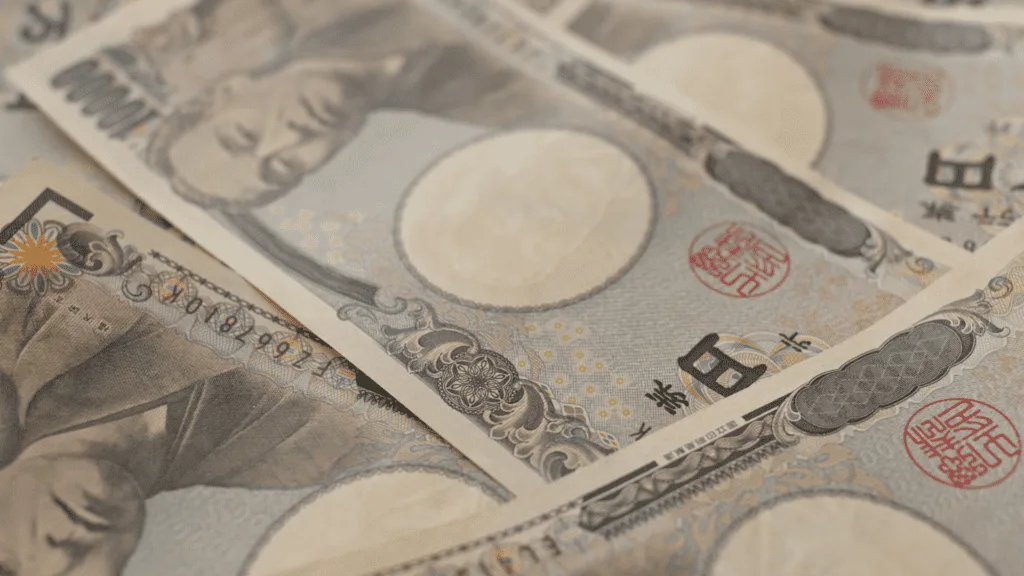
Japan is still a cash-heavy country, and not every card will work in every ATM. A lot of travellers arrive assuming they can just withdraw money like normal, only to have their card rejected when they need it most.
Before your trip, check with your bank that your card works internationally and will function in Japanese ATMs. Stick to ATMs in 7-Eleven, FamilyMart, or Japan Post branches—they’re the most reliable when it comes to foreign cards. And it’s always smart to land with a little bit of yen already on you, just to get through that first train ticket or meal.
28. Relying only on credit cards

Even in major cities, there are still loads of places—restaurants, markets, temples, small shops—that don’t take cards at all. You don’t want to be caught off guard when you’ve just finished eating and realise the place is cash only.
Use a mix: keep some cash on you for smaller spots, use an IC card (like Suica or Pasmo) for daily spending, and save your credit card for bigger purchases or hotels. That combo covers you in almost every situation.
29. Not checking your international withdrawal fees
Some banks charge extra fees every time you take cash out abroad, and those charges can add up fast. Between ATM fees and your own bank’s fees, you could be losing more than you think without realising it.
Before your trip, check what your bank charges for international withdrawals and if there’s a better card or account to use while you’re abroad. Even better, bring a backup card just in case something goes wrong or one gets blocked.
30. Exchanging money at home/airport instead of using ATMs

It might feel like the safe move to exchange your yen before leaving, but you’ll almost always get a worse rate doing it that way—especially at airport counters.
You’ll get way better rates withdrawing yen from a local ATM once you arrive. Just make sure your card works (see above), and don’t forget to notify your bank that you’re travelling so they don’t flag your first transaction as suspicious.
31. Not getting or using an IC card (Suica, Pasmo)

IC cards are a game-changer. You can use them for trains, subways, buses, vending machines, convenience stores, even coin lockers. They’re rechargeable, easy to top up, and just make everything faster and easier.
You can buy a physical Suica or Pasmo card when you arrive, or if you’re using an iPhone (and live in a supported region), you can set one up digitally in Apple Wallet before you even leave. Either way, get one early—they make a massive difference when you’re navigating daily travel.
🏨 Accommodation & Ryokan Faux Pas
32. Booking hotels far from useful stations

Where you stay in Japan can have a big impact on your trip—not just in terms of comfort, but also time, money, and energy. A lot of travellers think, “Oh, it’s fine, I’ll just book something a bit cheaper outside the city,” but then end up spending hours every day just getting to and from the places they actually want to visit.
You don’t have to book a hotel right next to Tokyo Station or Shinjuku Station, but staying near a major, well-connected station like Ikebukuro or Ueno makes a massive difference. It’s even better if you can find accommodation a stop or two away on a main line—cheaper, but still convenient.
Just make sure it’s right next to the station, so you’re not dragging your luggage across town. Avoid places too far out with limited train access—they’ll eat up your day and keep you far from all the good stuff.
33. Not knowing onsen rules

Bathing at a sento or onsen is an amazing way to experience Japanese culture—but there are a few important rules to know before you hop in. These public baths aren’t just for getting clean—they’re for relaxing. Which means following the local etiquette is a must.
Before entering the bath, you have to wash thoroughly at the shower stations. No soap, shampoo, or scrubbing once you’re in the bath itself. Don’t splash, swim, or soak your towel in the water—most people fold it and leave it on their head or at the side. And absolutely no photos, no matter how pretty the setting is.
Tattoos may still be an issue in some places, so check ahead—some spots allow them, some don’t, and others offer cover-up stickers or have private baths you can book. If you’re not sure how something works, just ask politely or look for signs and instructions (they’re often in English).
We’ve prepared this detailed guide on how to enjoy Japan’s hot springs like a local.
34. Getting annoyed about check-in/check-out times

Most hotels in Japan stick very strictly to their check-in and check-out times. If your check-in is at 3pm, that’s when your room will be ready—no earlier. And don’t count on early check-ins or free upgrades, even if it’s a special occasion.
It’s not about bad service—it’s just the norm here. The best thing to do is drop your bags off at the front desk and go explore until your room’s ready. Same goes for check-out: aim to be out on time. It keeps things smooth for everyone.
35. Not realising hotel rooms are tiny (like… really tiny)

Unless you’re staying somewhere fancy, hotel rooms in Japan tend to be compact. And by compact, we mean just enough space for a bed, a narrow walkway, and maybe a fold-out desk. Opening a full-size suitcase on the floor? That might take some creative angling.
It’s totally normal here, especially in city business hotels. The key is to pack smart, keep things tidy, and avoid bringing more than you actually need. If you’re travelling with large bags, use coin lockers or luggage forwarding to keep the room from feeling even smaller. The space might be tight, but it’s functional—you’ll get used to it quickly.
🧼 Etiquette and Cultural Mistakes
36. Wearing shoes indoors
This one’s a biggie. In Japan, wearing your shoes indoors—especially in someone’s home, a ryokan, or certain restaurants—is a hard no. You’ll usually see a clear space at the entrance with shelves or a step-up area where you’re meant to take them off.
If slippers are provided, use them—but don’t forget to take those off too when stepping onto tatami mats. Oh, and there’s often a separate pair of slippers just for the toilet (yes, really). It feels like a lot at first, but once you get used to it, it just becomes second nature.
37. Travelling during major holidays without planning for crowds
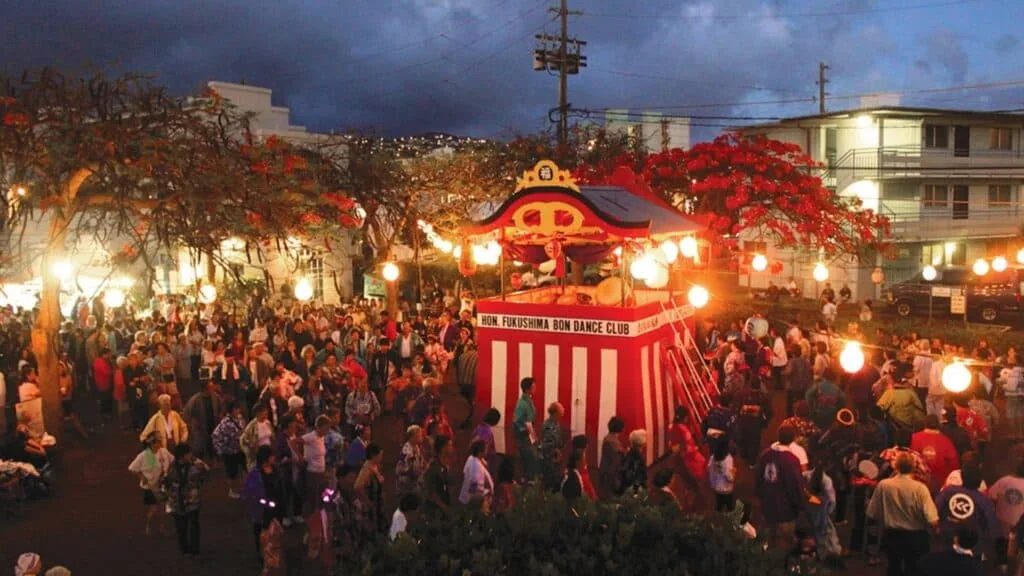
Golden Week (late April–early May), Obon (mid-August), and New Year are huge travel times in Japan. Locals are off work, everyone’s moving around, and everything—hotels, trains, restaurants—gets completely packed.
That doesn’t mean don’t go. It just means plan way in advance. Book your train tickets early, lock in accommodation, and be mentally ready for big crowds and queues. If you’re not a fan of hectic vibes, you might want to avoid these dates altogether.
38. Assuming everyone speaks English

This one catches people off guard. Japan has amazing service and loads of signage, but that doesn’t mean everyone speaks English—especially outside big cities or in smaller spots like ramen shops or countryside train stations.
So don’t roll in expecting perfect English everywhere. Be ready to point at menus, gesture your way through conversations, and pull out your translation app when needed. Smile, be chill, and roll with it. If you keep things light, people will usually try to help—even if you’re both just guessing half the time.
39. Using loud voices in quiet zones (trains, temples, ryokan)
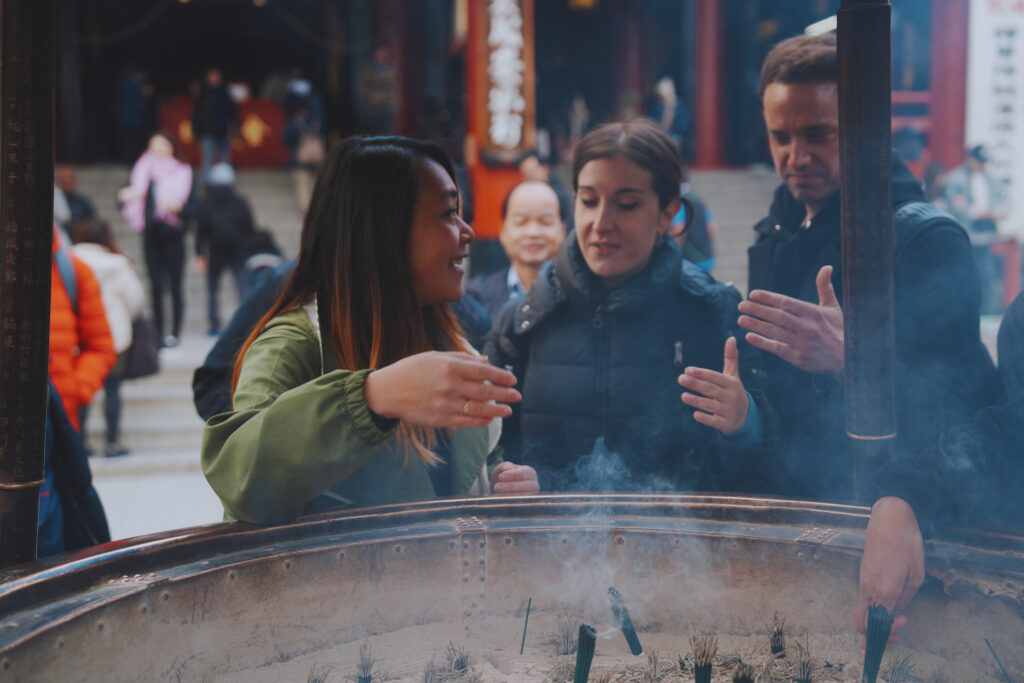
Trains in Japan are quiet. So are temples, shrines, and many traditional inns. You’ll notice locals tend to speak softly or not at all in these spaces, and loud conversation sticks out—fast.
You don’t need to whisper, but try to match the volume of the space you’re in. If everyone else is quiet, take the hint and keep things low-key. It’s just about being aware of your surroundings and respectful of the shared space.
40. Overlooking seasonal events and local festivals

Japan is packed with incredible seasonal events—like summer fireworks festivals, autumn foliage light-ups, winter illuminations, and spring matsuri (festivals) in tiny towns you’ve never heard of. But if you don’t do a bit of research before your trip, you might miss them entirely.
Some of the best experiences in Japan aren’t tourist attractions—they’re the pop-up food stalls, lanterns, drum performances, or random street parades you stumble into. Look up what’s happening in the areas you’ll be visiting, and try to time your trip around something cool. Even a small local festival can end up being the highlight of your trip.
✅ Before You Go

You don’t have to be perfect—just aware. No one expects you to memorise every unspoken rule or breeze through Japan like a local on day one. But now that you know what not to do, you’re already ahead of the game.
So go slurp those noodles, wander down side streets, soak in an onsen, and get a little lost (in the good way). Japan’s full of surprises—in the best possible way—and a bit of prep now means way less stress once you land.
Have the best time. You’ve got this. ✨🇯🇵





